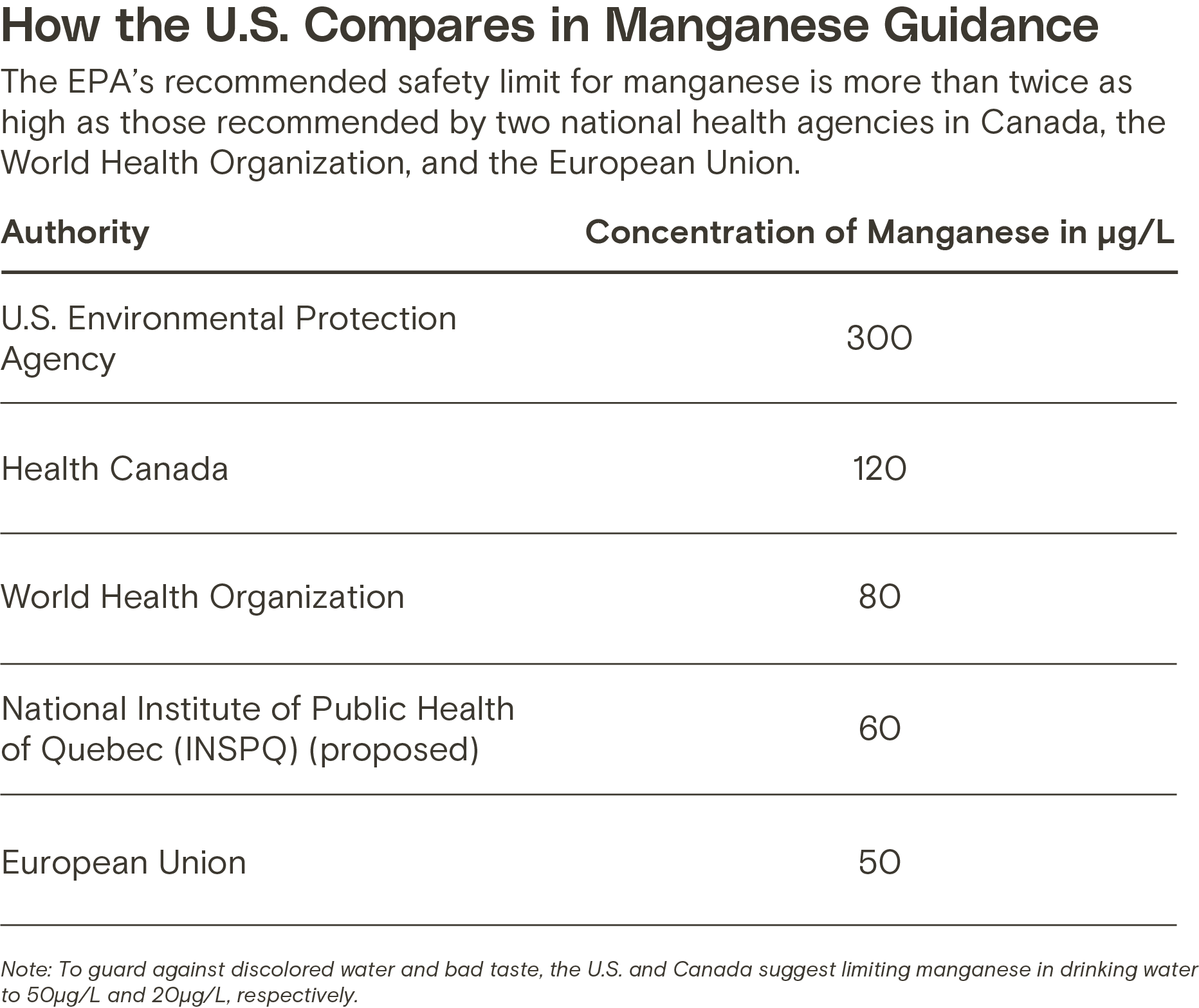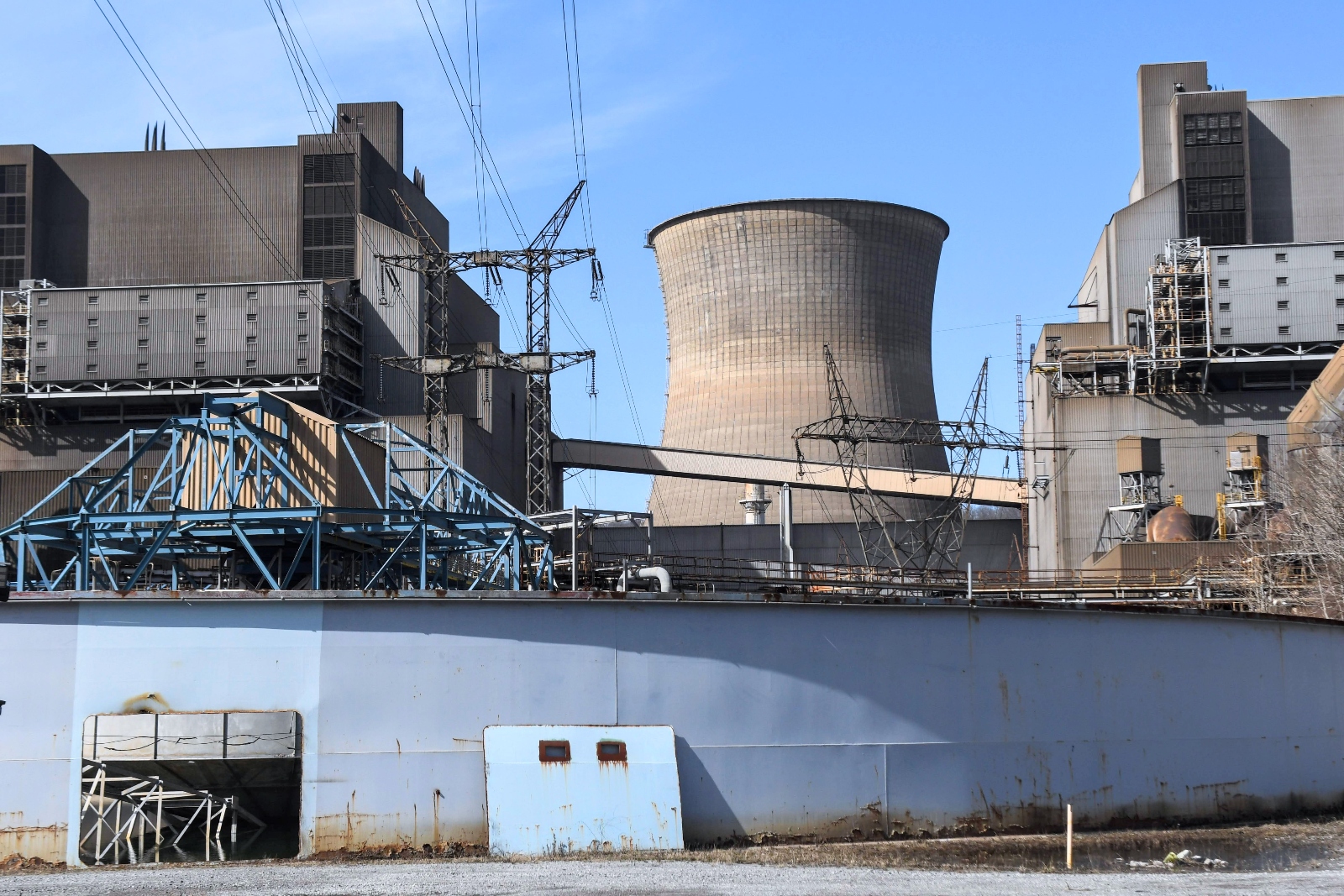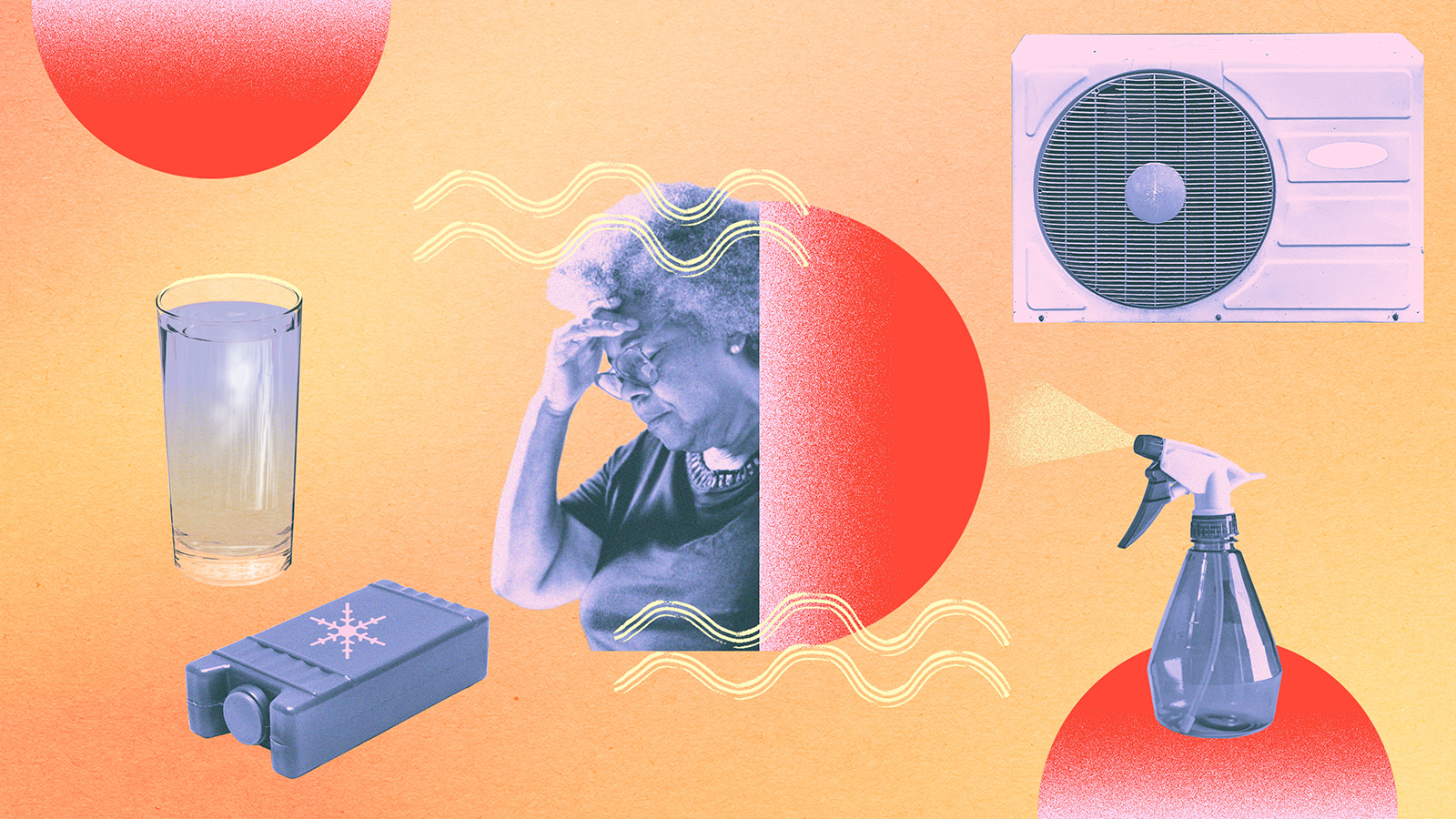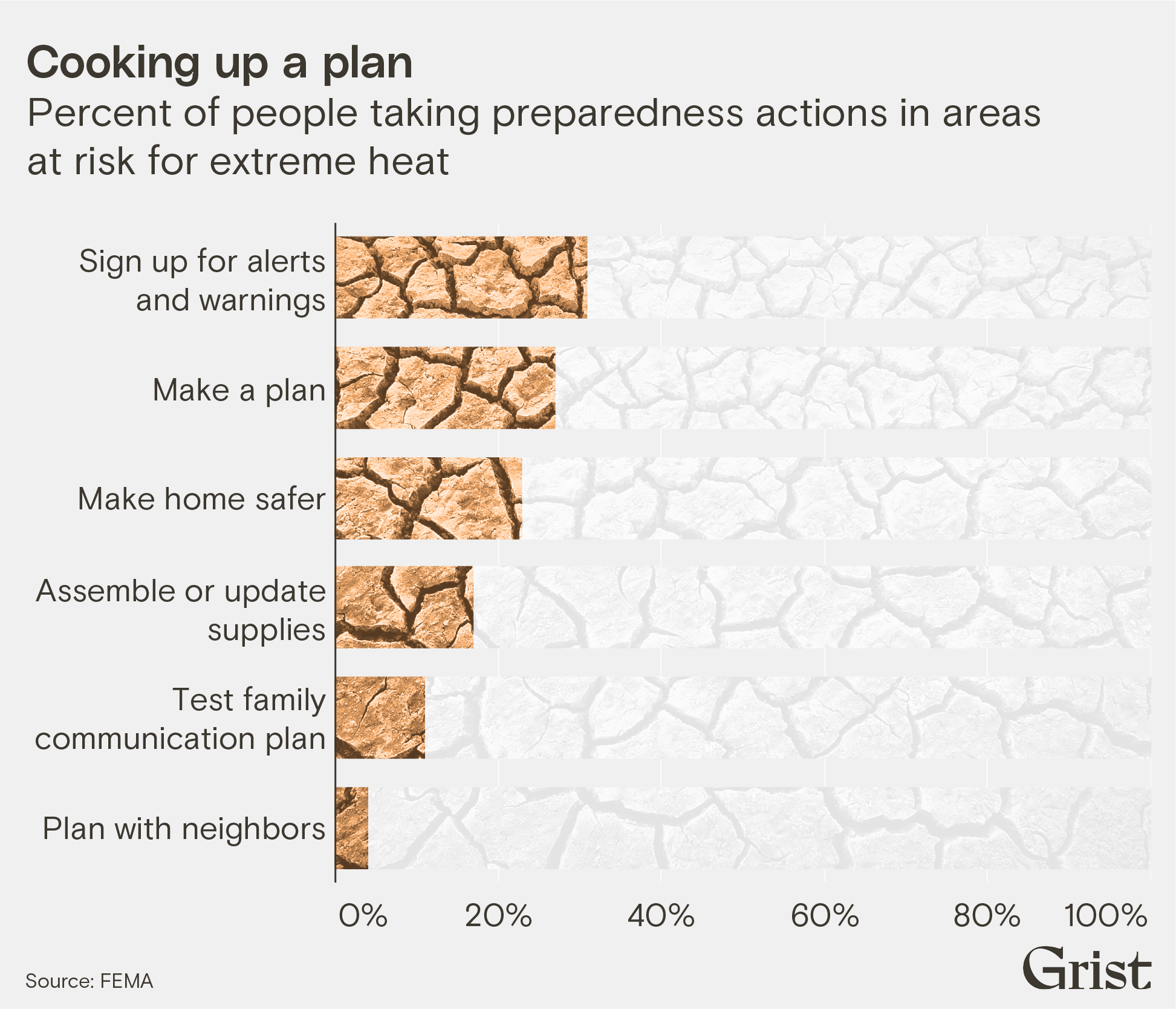
This story was co-published with Public Health Watch.
When David Butts’ water filter is off and he turns on a tap in his modest house in this rural community, black water streams out.
Butts said his water has gotten progressively worse in the past decade.
The 56-year-old retired home contractor is angry that he must spend around $50 a month on filters to clean his drinking water. And he worries that before he began using filters five years ago, the dirty water was threatening the health of his ailing, elderly mother, who lives with him.
Butts is not the only one upset over tap water. Dozens of other residents in this no-frills borough about an hour’s drive northwest of Pittsburgh have experienced repeated bouts of discolored water for years, costing them money and raising fears for their health. Residents say the tainted water stains bathroom fixtures and clothing, and residual sludge blocks pipes and destroys washing machines and water filters. Some are especially worried that the water could harm their children.
A growing number of people in Industry, population 1,800, say they’ve had enough. Last fall they asked the local water authority — the Industry Borough Municipal Authority — to investigate and rectify the problem. The authority’s annual water reports from 2019 to 2021 said the water was clean and met federal standards. But under public pressure, the authority asked a private company to collect and test water samples from nine homes, including Butts’. The results shocked and confused Industry residents: The tests found a little-known, problematic metal in the water — manganese.
In low doses, manganese is essential for good health, ensuring proper metabolism, bone growth, and healing of wounds. But in high concentrations it becomes toxic and can cause neurological harm, including tremors and hearing loss, and even lead to symptoms similar to Parkinson’s disease, reports the Office of Dietary Supplements, part of the National Institutes of Health. Symptoms may not appear for months or years. Manganese in drinking water may be particularly harmful to infants and children, various studies suggest: It is linked to lower IQ and behavioral problems like attention deficit hyperactivity disorder.

Natasha Gilbert / Public Health Watch
High levels of manganese can be a serious problem, says Linda Birnbaum, former director of the National Institute of Environmental Health Sciences and the National Toxicology Program. “It’s not good for people’s brains, especially infants and children. It’s very concerning.”
The tests in Industry found that one home had manganese levels 4.8 times higher than what the U.S. Environmental Protection Agency says protects people’s neurological health. That house and two others failed the EPA’s standard for appearance and taste. Butts’ unfiltered water and tests at six other sites were within safety and aesthetic limits — which Butts and others found hard to believe.
“Don’t tell me this water is clean,” he said. “How many people are getting sick when [the water authority] could have been doing something?”
Under Pennsylvania rules, drinking water providers must limit manganese to 50 micrograms per liter (µg/L) or below. However, they don’t have to test for the metal, so it can go undetected. The EPA and many other states and communities don’t set legal limits or enforce rules on the metal in drinking water. The EPA is considering whether manganese needs tighter guidelines or legal limits. But its efforts have met stiff resistance from industries that use manganese in their products or produce manganese as waste, including the steel, chemical, energy, and agricultural industries.

Natasha Gilbert / Public Health Watch
A search of federal records, some obtained through Freedom of Information Act requests, shows that corporate groups have repeatedly lobbied the EPA to delay or derail regulation. Some of the groups and companies also have hired scientific consulting firms, such as ToxStrategies and Exponent, to produce reports on manganese health risks that suggest stricter controls are not needed and children are not more vulnerable to excess manganese than adults.
The firms’ conclusions conflict with other, publicly funded studies, and some government and academic researchers question the accuracy of the industry-funded findings.
David Michaels, a former head of the Occupational Safety and Health Administration (OSHA), said industry efforts to fight manganese controls appear to be “classic product defense.”
Industry has used the tactics in regulatory battles over products ranging from pesticides to opioids, said Michaels, author of the books “Doubt Is Their Product” and “The Triumph of Doubt.” The goal of this “mercenary science”, as he calls it, is to preserve profits and avoid future litigation or cleanup costs.
“Industries downplay the risks of their products, spreading disinformation here and hiding evidence of harm there,” Michaels said.
Industry groups and consultants dispute this view, saying they play a valuable role in shaping policy that protects the environment and people’s health.

Natasha Gilbert / Public Health Watch
In a written statement to Public Health Watch, Joseph Green, a lawyer who represents the Manganese Interest Group, wrote that the group, composed of trade associations and companies, supports the “scientifically sound” regulation of manganese. It participates in public rulemaking and encourages EPA policies that protect public health and the environment, Green wrote. Regulators must consider all the available scientific information and the views of a wide range of stakeholders, including industries, he added.
At a minimum, dozens of drinking water systems across the nation have provided residents with water that has high levels of manganese; it may go undetected in many others.
An EPA survey published in 2021 tested 5,034 U.S. public water systems and detected manganese above the EPA’s “health advisory” level in 106, or 2.1 percent, of them. In some areas, such as the Village of Kiryas Joel, New York, and the town of Randolph, Massachusetts, levels were over six times higher than the EPA’s recommended safety limit. Some state water experts say the number of people affected is likely much higher because the survey focused on larger drinking water facilities, which can have less manganese contamination than smaller ones.
The EPA suggests that people consume water with no more than 300 µg/L of manganese each day over their lifetimes to avoid potential neurological harm. Infants younger than six months should be limited to that daily amount in water for no more than 10 days. But these levels are not a legal limit, so most public water utilities are not required to monitor manganese or remove it. By contrast, other international authorities such as the World Health Organization advise much tighter controls on manganese.
The EPA’s guidance is also based partly on a decades-old estimate of the average level of manganese adults reported eating every day, said Seth Frisbie, an expert in drinking water contaminants and professor emeritus of environmental chemistry at Norwich University in Vermont. The estimate doesn’t adequately account for infants, who weigh much less than adults, absorb the metal more readily and excrete it more slowly, leaving them at risk by the guidance, he said.
What’s more, infant formula can contain high levels of manganese — manufacturers are legally required to add it — potentially increasing babies’ cumulative exposure, Frisbie said.

Manganese can occur in drinking water through both natural processes and industrial pollution. Rainwater and sometimes river water seep into soil and over manganese-containing rocks, picking up and sending the metal into groundwater used for drinking. Some states, such as Minnesota and New Hampshire, have higher levels of manganese in their soils and groundwater. It’s also discharged by industries such as steel manufacturers, coal-fired power plants and hydraulic fracturing operations used to extract oil and gas.
Some epidemiological and animal studies funded by governments or universities suggest that consuming manganese at levels that exist in hundreds of U.S. water supplies may harm cognition, including reduced memory, learning ability, and other intellectual functions. One analysis, led by University of Montreal researchers and based on data from two studies involving 630 children in Canada, found that manganese levels in drinking water of around 133 µg/L and 266 µg/L — considered safe by the EPA— were associated with a 1 percent and a 2 percent drop in one type of IQ, respectively.

Natasha Gilbert / Public Health Watch
That may seem minuscule. But Youssef Oulhote, an epidemiologist at the University of Massachusetts Amherst who ran a separate analysis of the Canadian schoolchildren data, said that while a person may barely notice losing a few IQ points, the effect across an entire population can be significant, leading to more people with intellectual disabilities and fewer who are cognitively gifted.
A study of 643,401 children in Denmark, released in 2020, found that children exposed to concentrations of manganese of around 100 µg/L at any one time during the first five years of life were much more likely to have a type of ADHD that limits attention span and increases distractibility and forgetfulness than those exposed to below 5 µg/L.
No single study has proven that manganese causes neurological problems in infants and children. Some studies that show links between manganese and neurological problems have limitations. For example, the studies in Canada involved a small number of children, making it difficult to draw firm conclusions. Taken together, however, these studies offer “compelling evidence” that manganese in drinking water may harm children’s neurology and behavior, Oulhote said.
Industry representatives disagree. The Manganese Interest Group suggests that infants and children are not more exposed or vulnerable to high levels of manganese than adults, and when the metal is consumed in drinking water at levels of 100 µg/L or lower, it doesn’t significantly build up in infants’ and children’s brain tissue. The group’s argument is based on models published in an academic journal and financed by Virginia-based Afton Chemical Corp., which produces manganese-based additives for fuel. The modeling was largely performed by ToxStrategies, which has offices across the country and has done work that minimizes the risks of products for industrial clients. For example, it has performed several studies paid for by an industry think tank that questioned some of the dangers of hexavalent chromium, a carcinogenic compound used by the steel industry and others and a byproduct of electricity production.
The Manganese Interest Group also funded a review performed by California research firm Exponent that found there is insufficient evidence to prove that manganese consumed or inhaled by infants and young children causes neurodevelopmental problems. Green, the lawyer for the interest group, said while it funded the study, it had no control over content.
The Manganese Industry Group suggests that people are largely exposed to manganese in food, so drinking water is unlikely to add much to their manganese consumption. However, New Jersey state toxicologists wrote in 2021 that despite the intake through food, “drinking water serves as a substantial exposure source in some areas of the world, including New Jersey.”
The borough of Industry lives up to its name. Nearby, giant cooling towers mark the Beaver Valley Power Station, a nuclear plant, on the south side of the Ohio River. To the northeast sits a coal-fired power plant that closed in 2019. The area also has several hydraulic fracking sites and a Shell plastics plant.
Many residents look fondly on the area’s industrial backbone, which sustains the local economy. Butts remembers visiting his father at the coal plant, where he spent his working life driving a coal-ferrying barge.
But some residents are beginning to wonder if industries, especially fracking, are behind the borough’s contaminated water.
On a cool evening in late March, around 20 residents gathered at a monthly meeting of the water authority’s board. The atmosphere was tense, and at one point police showed up and hovered outside. During the public session, Andrew Zachodni, the board’s then vice-chairman, confirmed that manganese was the likely cause of residents’ dark water and said the authority was looking into why there’s so much of it. The authority’s latest water report, for 2022, found manganese present at levels that range above EPA recommendations.

Natasha Gilbert / Public Health Watch
Diane Donatella, an Industry native, asked if fracking could be the cause. About nine years ago she started having stomach problems when she drank the water and noticed the water staining her toilets. “The timing coincides with the fracking,” she said.
Donatella said she didn’t complain to the authority until now because she didn’t realize others were having similar problems. “I thought it was just me,” she said.
Zachodni said the authority might look into Donatella’s theory. If she’s right, Industry wouldn’t be the first Pennsylvania community to allege manganese contamination of drinking water caused by fracking. Several residents of Connoquenessing Township in Butler County, to the northeast, sued Rex Energy, alleging the Pennsylvania company polluted their well water with manganese and other contaminants through fracking. According to news reports, the case was settled in 2018, with Rex, now owned by PennEnergy Resources, not admitting wrongdoing.
John Stolz, an environmental microbiologist at Duquesne University in Pittsburgh who studied the Butler County issue, said that escaped fluids and gases from oil and gas extraction can stimulate subsurface bacteria, which in turn releases manganese from rocks into the water.
Also at the meeting, Bryan Catlin, a father of two boys, said that on his street a handful of children, including his own, have autism or learning disabilities. He wondered if the cause was manganese in the water. But board members said they didn’t want to have that discussion and abruptly ended the public session. Several residents said afterward they were angered by the dismissal of Catlin’s concerns. The water authority later declined to comment to Public Health Watch, citing advice from its lawyer.
Jessica McCafferty, a mother of two who lives near Butts, says she worries that manganese-tainted water may have played a role in causing ADHD in her 11-year-old son. They used to drink the tap water but stopped a couple of years ago when it developed a metallic taste and her infant son’s bath water was brown with black specks. Now she bathes him every other day and drinks only bottled water.
“I worry,” she said. “The baby starts sucking on the wet washcloth and I think, ‘No’!”

Natasha Gilbert / Public Health Watch
As evidence of risks grows, the EPA has taken steps that could lead to tighter controls of manganese in drinking water: It has added the metal three times to its Contaminant Candidate List. Industry has fought back.
Since 1998, the EPA has published five such lists, often including dozens of unregulated chemicals and microbes that could be found in drinking water. The agency must select at least five of the candidates to evaluate more closely and later decide whether any need regulation.
The EPA invites any interested party to submit comments.
In two consecutive rounds of the list — preliminary ones were released in 2015 and 2021 — industries that use or produce manganese objected to its inclusion via the Manganese Interest Group, which includes the American Iron and Steel Institute in Washington, D.C., and the Afton Chemical Corp.
Between 2015 and 2020, the interest group twice wrote to the EPA asking that it remove manganese from the candidate list. In 2015, the group argued that the best available science does not support the metal’s inclusion, citing research funded by Afton Chemical, documents show. In 2017, the group reiterated its position, as did the American Iron and Steel Institute, in separate comments sought by President Donald Trump’s administration on its plans to roll back EPA regulations. The institute also met with EPA representatives the same year to discuss “environmental issues that are key to the steel industry,” according to correspondence between the EPA and Thomas Gibson, then president and CEO of the institute. Manganese was among the institute’s key issues. The correspondence was obtained by environmental groups and posted online by Toxic Docs, a repository of records on toxic substances based at Columbia University and City University of New York.

Natasha Gilbert / Public Health Watch
The EPA disagreed with industry’s position, but in the end kicked a decision on manganese down the road. In March 2020, the agency announced a preliminary decision not to consider manganese for regulation at the time, preferring to wait for nationwide data on its presence in drinking water. In response, a group representing drinking-water utility officials, advocates and others told the EPA it should “make appropriate management of manganese a priority.”
In separate comments, New Hampshire’s environmental services commissioner said the EPA should reassess its health guidance on manganese and better inform the public about the dangers to infants.
Instead, the EPA confirmed its manganese decision in early 2021.
But the issue didn’t go away. A few months later, the EPA released a draft of the next Contaminant Candidate List, which included manganese. Industry lobbying persisted. In September 2021, the Manganese Interest Group requested in public comments that the EPA strike the metal from the draft list. The group cited as evidence the two modeling papers funded by Afton Chemical and prepared by ToxStrategies, among others. One paper predicts manganese in drinking water won’t significantly build up in infants’ and children’s brain tissue when consumed at levels of 100 µg/l or below, commonly found in tap water.
Some scientists challenge the quality and findings of the ToxStrategies papers. Frisbie, the environmental chemist, and Erika Mitchell, his wife and research partner at a nonprofit toxicology lab, said in an interview that the papers contain mistakes and inaccuracies. In an assessment published in 2021, researchers at the Minnesota Department of Health (MDH) wrote that that one of the ToxStrategies papers uses an extremely low rate for how much manganese infants absorb from reconstituted formula. That rate is not supported by available scientific studies, wrote the researchers, who added their views weren’t necessarily those of the MDH.
If the EPA were to accept ToxStrategies’ findings, it could weaken the agency’s health advice on safe levels of manganese, potentially leaving people more vulnerable to harm, Frisbie and Mitchell say.
ToxStrategies did not respond to emails and phone calls requesting comment. Afton Chemical also did not respond to requests for comment.
Birnbaum, former director of the health sciences institute, said that, in general, many scientists working for consulting firms are good researchers but they interpret their data in a way that makes their employers or sponsors happy. “They may not even be conscious that they are doing it,” she said.
Responding to the 2021 EPA draft, the Association of State Drinking Water Administrators called for the EPA to do more to assess and control manganese. The group’s executive director, Alan Roberson, said in an interview that an informal survey of members last year found a majority wanted the EPA to regulate manganese.
When considering regulations or taking other actions, the EPA consults a 46-member, handpicked Science Advisory Board for guidance. The water contaminant list is among the proposals that come before the board, which is composed of scientists from academia, government and industry.
Here too, industry pressed its case.
At a June 2022 meeting of a board committee, Green, lawyer for the manganese group, called on board members to recommend that the EPA cut manganese from its contaminant list. Green said his group was “perplexed” that the committee had not referenced the models prepared by ToxStrategies and funded by Afton Chemical in a draft of its recommendations on the candidate list.
A consulting-firm scientist on the board also supported the ToxStrategies model.
Barbara Beck, a lead toxicologist at Boston-based Gradient, was appointed to the board in 2019 by the Trump administration and has authored papers defending clients’ and their products, including ones containing lead and so-called “forever chemicals”, which are potentially toxic.
Beck had produced articles with Gradient colleagues in academic journals in 2009 and 2017 that questioned the health impacts of inhaling manganese.
In July 2022, records show, Beck advised that the EPA board committee delete from its draft details of a review of epidemiological studies that suggest manganese in drinking water is linked to neurological problems in children. She proposed adding other models instead, including those developed by ToxStrategies that Green wanted included.
Beck acknowledged some of the concerns about manganese, writing there is merit to the EPA considering whether science supports adding the metal to the contaminant list. But she said the review of epidemiological studies didn’t make a strong enough case for inclusion.

Natasha Gilbert / Public Health Watch
In contrast, Gloria Post, a state toxicologist for New Jersey, criticized the draft guidance for omitting many studies that indicate neurobehavioral harm to infants from manganese in drinking water.
The epidemiological studies that Beck objected to made it into the board’s final guidance for the contaminant list. So did the ToxStrategies study, making it more likely that industry findings on manganese are considered in the EPA’s discussions.
The EPA decided to include manganese in its final version of the list published in November 2022 and will decide by 2026 which contaminants might need tighter controls.
Public Health Watch reached out to Beck and Gradient for comment, but they did not respond to emails or phone calls.
In a parallel process, the EPA planned to assess how harmful manganese is to inhale and ingest, which could lead to a revision of recommended safety levels. The process, called IRIS — for Integrated Risk Information System — is a key EPA program to impartially assess the human health risks of chemicals in the environment.
Emails obtained through a records request by Public Health Watch show that the EPA began working on the assessment and issued its work plan for review across the agency in August 2018. But eight months later the EPA announced it had suspended the manganese assessment. Emails obtained by Public Health Watch suggest the manganese assessment was held up by the EPA Office of Air and Radiation. The office was headed at the time by William Wehrum, who resigned in 2019 over alleged ethics breaches, including doing alleged favors for an energy company.
An EPA spokesperson said in a statement that manganese is not a priority chemical for evaluation, but if it becomes a priority and there are enough resources, the EPA may resume the assessment.
Birnbaum, the former director of the National Institute of Environmental Health Sciences, said in an interview that it’s time for the EPA to act to protect vulnerable populations. “In my mind manganese should be regulated,” she said.
Meanwhile, some states have tightened manganese limits or recommendations on their own. Minnesota advises that bottle-fed infants consume no more than 100 µg/L daily of manganese in drinking water. New Jersey and California require water providers to notify customers if the manganese level exceeds 50 µg/L.
Without the federal government endorsing new standards, however, state health officials can find it difficult to convince lawmakers and communities to set new limits, said Jonathan Petali, a toxicologist for the New Hampshire Department of Environmental Services.
Residents like those in Industry, Pennsylvania, must bring on the fight themselves. And their efforts are starting to pay off.
A spokesperson for the Pennsylvania Department of Environmental Protection said it is working with the Industry water authority to ensure required standards are met through regular testing of tap water for manganese, cleaning of the wells and installing a new treatment system.
Butts says he will keep pushing until he sees results. He’s a former Marine and sees it as his mission to restore clean water to his community. He and other residents want the authority to determine the causes of the black-water problem and assess whether Industry’s children are at risk of neurological harm.
“Is our water safe?” Butts asked. “We don’t know.”
This story was originally published by Grist with the headline Black water: How industry is fighting stricter controls for a little-known drinking water contaminant on Aug 29, 2023.





 (@britishantarcticsurvey)
(@britishantarcticsurvey)


